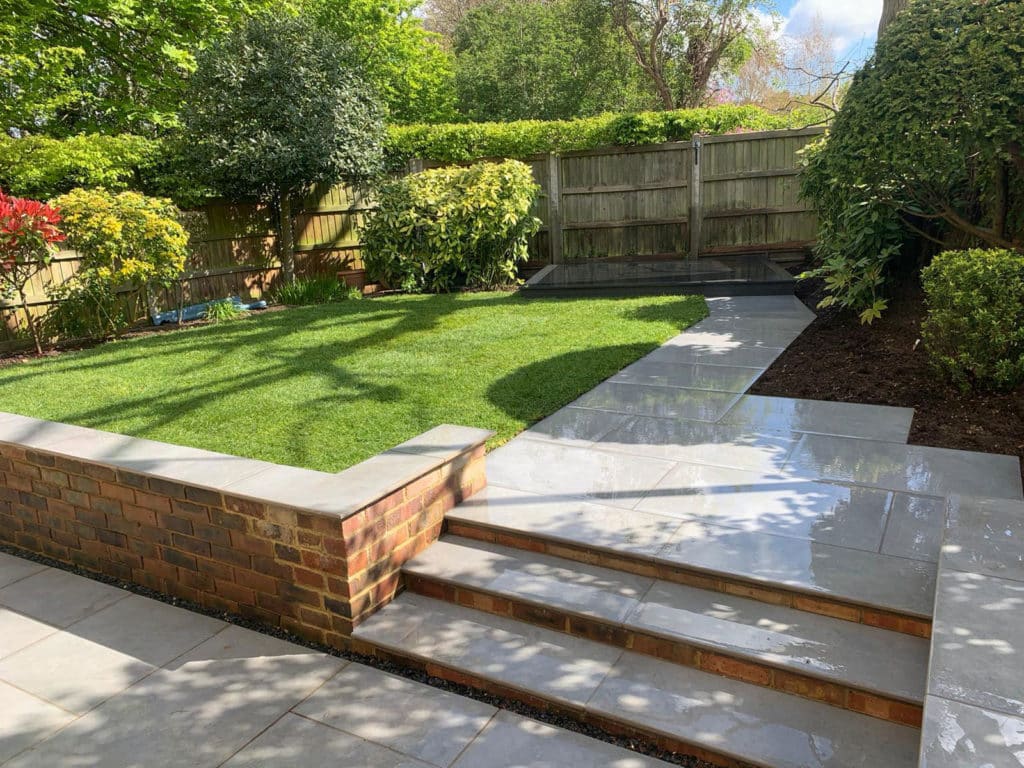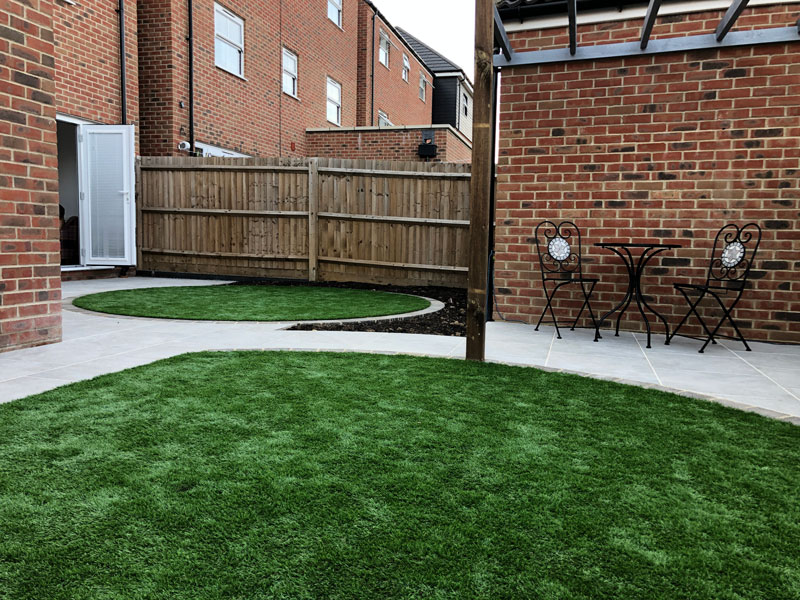
19 May Grass lawns or alternative lawns? Which do you prefer?
Lawns, do you love them or would you avoid them at all costs? We’re discussing the pros and cons of lawns in landscaping.
One of the questions we always ask our clients at the outset is about their attitude to a lawn in the garden. Many still consider the lawn to be the principal requirement of a garden, a fundamental centrepiece to which other elements take second place. A beautiful expanse of lawn has always seemed ingrained in the British psyche. But increasingly we are building gardens with a lawn being reduced in size and significance.
Why would this be? It’s true that when you engage the services of a professional garden designer or landscaper your eyes will be opened to the full range of landscapes available. There are so many surfaces to choose from. Hard surfaces, such as patios, paths, gravel etc. Or larger planted beds and borders and alternative focal points. But mainly, I think, people are concerned that maintaining a lovely looking lawn is an awful lot of work.
With the time, effort and dedication required for the regime of weeding, feeding, mowing, scarifying, aerating, top dressing and repair, you can perhaps understand these feelings.

A beautiful lawn like this one creates a lovely ambience in a garden
All lawns need sunlight, moisture and good drainage. Yet the very act of using the lawn how it is intended compacts the soil and reduces drainage. Here in the drier east of the country, lots of lawns are now looking yellow well before midsummer. So what are the pros and cons of natural lawns and landscaping.
- Wonderful natural surfaces that soak up rainwater and help to cool the air
- Relatively cheap to create (when compared to hard landscaping surfaces)
- Well maintained lawns provide a contrast in colour and texture that show your patios and plantings off to their best advantage
- The perfect play surface for children and pets
- Need regular maintenance (unless you opt for a slow growing wildflower lawn)
- Grass doesn’t grow brilliantly in shade
- Establishing a lawn from seed or turf needs quite a lot of water
- Prone to wear and tear plus damage from pet pee etc
- What do you do with the clippings and where do you store the mower?
How to create a beautiful lawn
The Holland Landscapes Team are well versed in preparing soil for seeding or turfing. And the secret to a beautiful lawn really does lie in the preparation.
- Start by removing any vegetation and/or other debris from the surface of your lawn area.
- Dig deep (at least 15cm) to relieve soil compaction and unearth any buried roots or rubble
- Add new topsoil or soil improver if needed
- Apply pre-turfing fertiliser to encourage roots to search deep into the soil
- Level the area and rake the soil to a fine tilth
- Firm the soil with your feet – if it’s too fluffy you’ll find that it settles unevenly and all of your levelling will have been in vane.
- Rake again to loosen the top layer
- Lay turf or sow grass seed
- Keep it well watered until the plants are established
- Give it a light mow once the grass reaches around 7.5cm tall. NEVER remove more than 1/3 of the length.
Need a hand? Click here to learn about our turfing services
Alternative Lawns

Who says you need a grass lawn anyway? There are plenty of alternatives. Tough, low growing wildflowers such as clover, wild marjoram, daisies and selfheal can create a beautiful surface that feeds the bees and only needs mowing three or four times a year.
Or how about a full-on wildflower meadow? You can mow paths and seating areas between the taller plants for a romantic, bohemian look and feel that will bring you closer to a fascinating ecosystem.
For low traffic areas, sedums make a pretty and low maintenance lawn – but they don’t cope well with lots of foot traffic.
Look at the famous gravel garden at Beth Chatto’s gardens near Colchester. Wide gravel paths flow through the large planted beds like a river with plants spilling over the edge. Gravel is an excellent substitute for grass for drainage properties and it is economic to install. And thoughtfully laid paving can make small gardens into attractive courtyards, using soft landscaping pockets to soften the effect.
And of course there is always artificial turf, which although much more expensive to lay, is becoming the answer to a lot of homeowner’s issues. It is much improved now in appearance and texture and its benefits are hard to deny. Those with active kids will appreciate its resistance to tough wear and tear, and the fact that they can get back out there soon after a shower. No more mud traipsed through the house either. It is a perfect solution for those physically unable to manage the demands of a real lawn, and also for gardens unoccupied for some of the year such as holiday lets. Gardens with unconducive environmental factors such as excess shade or wet would also benefit.
Some will shudder at the prospect, some will love it. But it’s certainly good to have options.
Need help to create a new lawn in your garden? Call Holland Landscapes today.
We also offer artificial turf installation services, our team will prepare the base layers and install a carpet of realistic and hard wearing artificial grass. Discover more here.



Sorry, the comment form is closed at this time.